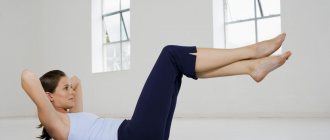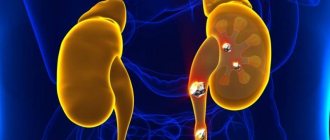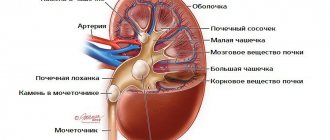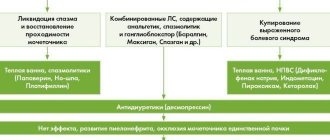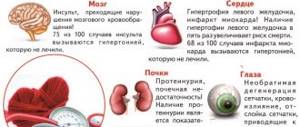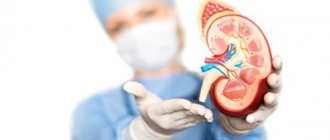Today, a very common problem among people is the presence of urolithiasis. The disease is accompanied by the formation of stones with unpleasant symptoms and pain. Citizens leading an active lifestyle are especially interested in the question of whether physical activity is possible with kidney stones. Many exercises can improve blood circulation, especially in the abdominal cavity, so activity can play a positive role in medical treatment. In this article we will look in detail at whether it is possible to engage in physical sports or not.
Relationship between the muscular system and the genitourinary organs
It is worth noting that the relationship between these two systems is very strong. It manifests itself both physiologically and functionally. The main task of the kidneys is to remove metabolic products from the body that enter the bloodstream due to exercise. After physical activity, a person experiences changes in the components of urine and their quality.
Attention! Thanks to sports, elements appear in the urinary secretions that were previously absent from the body.
This means that if you play sports, you can not only enhance the quality of the excretory ability of the kidneys, but also influence the composition of the acid and base balance of urine. Improves blood flow and circulation in the kidney organs. Each individual nephron begins to function better against the general background.
Important! It is necessary to notice the pattern of the body: the faster it adapts to the load, the more stable the organs of the genitourinary system become.
Not only sports activities improve kidney function. Massage has a positive effect, since by massaging certain points on the body, blood flow improves. This reduces the risk of inflammatory processes in the human body. In most cases, a decrease in diuresis is possible with moderate exercise.
Fitness for kidney disease: who can?
As a rule, doctors allow physical activity when, after treatment, a person moves from the acute period of the disease to the recovery stage. Here, not just the type of load is selected, but also its mode, and necessarily individual rehabilitation therapy. The correct selection of a set of exercises depends on the initial diagnosis, age, and the physical shape the person was in before the illness. “The best thing is therapeutic exercises, which is also therapy,” says Anna Timofeeva. “Every little detail in this situation is very important, because excessive stress - long training, too frequent exercise - can weaken the body, which has not yet had time to recover.”
“When there are problems with the kidneys, it is better to focus on physical therapy and training under the supervision of a physical therapy specialist,” agrees Sergei Cherednichenko, a fitness gym instructor. Impaired kidney function often leads to poisoning of the body with toxins, because one of the main functions is the removal of metabolic products from the body and the regulation of fluid, acid-base balance. With good muscle activity, metabolic products enter the blood and are actively excreted by the kidneys. Therefore, when choosing a particular level of physical activity, it is important to take into account existing problems with the excretory system.
Exercising with urolithiasis
Sports activity in the presence of the disease is safe only in the early stages of stone formation. If a crystal no larger than 1 mm is present in the body, then physical education will have a positive effect on health. If the stone is large, then exercises can cause it to move, causing it to get stuck in the ureter. This process will be accompanied by hellish pain and aggravation of the patient’s general condition.
Attention! Physical activity is realistic only in cases of a radical way to get rid of the problem.
It should be noted that absolutely all types of people, even professional athletes, are susceptible to urolithiasis. In people with an active lifestyle, stones can form due to the following factors:
- When you exercise, a large amount of water is removed from the body through the sweat glands. Urinary secretions become more concentrated, acquiring large amounts of salt. If you don't drink a lot of liquid, all the sand will begin to crystallize.
- If you overload yourself with physical activity, this can lead to disruption of metabolic processes in the body. In this case, destabilization of blood flow is observed.
- Consuming large amounts of protein, sports supplements, protein, and mineral water negatively affects kidney health.
Scientists conducted studies that showed that every fifth citizen who is actively involved in sports has a normal pH value in urinary secretions. The rest were found to have increased acidity. By the way, a pattern has emerged that team athletes have much better urine than those who engage in individual physical activity.
Attention! For this reason, preventive measures are prescribed on an individual basis, taking into account the characteristics of the sports activity and the type of competition in which the person takes part.
If a person is diagnosed with a large kidney stone, then he needs to stop playing sports. It is especially undesirable to engage in cardio exercises, such as jumping or running. It will be possible to return to sports only after completing the course of therapy, namely, either the fragmentation of the crystal or surgical removal. It is worth noting that even after healing, you should drink the optimal amount of water. Also eliminate protein and protein supplements from your diet. The rehabilitation period should be accompanied exclusively by natural and safe products.
Fitness for kidney disease: what is allowed?
- Physiotherapy. As a rule, classes are held individually or in groups under the guidance of a physical therapy instructor. “The group selects patients with the same pathology,” explains Anna Timofeeva. — If you have kidney diseases such as pyelonephritis or urolithiasis, then the following types of physical therapy are optimal: dosed recreational walking; classic therapeutic massage; gymnastic classes."
- Another option is calm classes such as yoga , Pilates, calanetics, body balance. The load will increase gradually, depending on how you feel. Typically the workout lasts from 20 to 50 minutes.
- A good alternative to the fitness room is walking in the fresh air at a brisk pace . However, depending on your circumstances, walking on a treadmill, as well as an exercise bike or cross-trainer are also allowed. In winter you can go cross-country skiing or downhill skiing, in summer you can ride a bicycle or scooter. As you already understand, the main thing is not to get carried away with increasing loads and avoid bumps and falls. It is precisely because of the risk of falling that doctors do not recommend rollers for such people - of course, if you are not a master at them.
Whatever you do, be sure to do a moderate warm-up (10-15 minutes of walking) and monitor your heart rate, best with a heart rate monitor. “Exercises for the muscles of the back, lower back, abs, exercises for the legs should be performed at a slow pace, always controlling your breathing,” explains Sergei Cherednichenko. “On the machines, it is recommended to use a moderate weight that allows you to do 15 repetitions, and a sufficient rest interval between sets and exercises.”
[new-page]
Performing physical therapy
Patients with urolithiasis can engage in special exercises that are designed for such a diagnosis. By performing it you can not only get rid of the disease, but also maintain the overall tone of the body. It is necessary to choose a complex only on the recommendation of a medical specialist. Only he can take into account all the nuances of the disease and select the optimal physical activity.
After surgery, it is not recommended to engage in physical exercise, as the load will be on the genitourinary organs. Only after a few days can you start playing sports. It is worth noting that you need to return to your usual load gradually. Exercises during this period will help:
- Positively influence and improve the functioning of the genitourinary organs;
- Get rid of sand and small crystals in systems;
- Bring metabolic processes back to normal.
You should engage in therapeutic physical activity taking into account that when diagnosing urolithiasis, you should include exercises with frequent changes in body position. Every day you need to allocate at least 45 minutes to exercise.
It is worth noting that this time can be divided into two approaches. For example, you can exercise for 20 minutes in the morning and evening. After this, you can go for a massage, thus consolidating the effect of the workout. This approach to therapy will help with the following:
- Peristaltic movement in the intestines improves due to the formation of fluctuations in the level of pressure in the abdominal area. The ureter stretches and contracts, allowing small particles to pass into and out of the bladder.
- The general complex includes movements that contribute to changes in the reflexes of motor-visceral tissues. There is an improvement in smooth muscle in the ureteral fibers.
Such exercises have a positive effect on the development of the abs and core; they contain twisting, sudden changes in body position, jumping rope, running in place and with acceleration, etc. It should be noted that a mandatory requirement for such training is alternating exercises. From all of the above, we can come to the conclusion that it is possible to play sports with kidney stones, but only in the early stages of the disease. In severe cases, it is not recommended to do anything without consulting a doctor.
Is it possible to heat the kidneys for medicinal purposes?
Have you been trying to cure your KIDNEYS for many years?
Head of the Institute of Nephrology: “You will be amazed at how easy it is to heal your kidneys just by taking it every day...
Read more "
Many people have learned from childhood: if something hurts, you need to rub the sore spot and apply a warm compress. This approach also applies to diseases of the joints, spine, and diseases of internal organs. Some people, having felt pain in the lower back, do not even think about whether it is possible to warm their kidneys, but immediately apply a heating pad or take a hot bath. Although in some cases heat can actually relieve or reduce pain, in others, warming the kidney area can cause an exacerbation of the disease.
Diseases that cause kidney pain
There are many diseases that can cause kidney pain. These include various kidney diseases, in particular pyelonephritis, and genitourinary diseases, such as urolithiasis or cystitis. However, the symptoms of pyelonephritis and cystitis are quite similar. These include:
- frequent urination, accompanied by pain;
- dull pain in the lower back;
- dull pain in the abdomen;
- cloudy, foul-smelling urine;
- purulent or bloody discharge from the urethra.
Patients, especially women, more often attribute these symptoms to cystitis, which they prefer to treat at home. There is a misconception that cystitis is the result of a cold. Then the following logic applies: if some organ has a cold, it needs to be thoroughly warmed up with compresses, heating pads, hot baths or saunas.
Modern medicine has proven that cystitis is an infectious disease that occurs as a result of the penetration of pathogenic organisms from the anus into the urethra. The fact that women are more predisposed to cystitis is explained by the peculiarities of female anatomy.
Warming up for cystitis
It has been noticed that both compresses on the lower back and compresses on the stomach can relieve pain and bring relief. However, heating during cystitis should be done extremely carefully. Warming compresses on the lower abdomen may cause bleeding in women. As for the kidney area, it is quite acceptable to warm it with a heating pad, a bag of hot salt, or a plastic bottle of hot water. However, this must be done in such a way that after thermal procedures the kidneys do not get cold: it is advisable for the patient to wear a warm woolen belt on the lower back and not go outside when heated.
Hot baths, especially herbal ones, with the addition of infusions of sage or horsetail, give good results in the treatment of cystitis. However, you can warm up with compresses and baths only if cystitis has not become acute and there is no inflammatory process in the body. This can be easily checked with a thermometer: if the body temperature is elevated and reaches at least 37 °C, under no circumstances should you heat the kidneys: heating may increase the formation of pus.
The same applies to patients with pyelonephritis. Pregnant women should not take hot baths: this can cause miscarriage. Patients with urolithiasis can take warm baths, but not hot ones, so as not to provoke the movement of stones.
Is it possible to warm the kidneys with bath procedures?
The positive effect that a bath has on the body has long been noticed. Therefore, answering the question of whether it is possible to bask with cystitis, we should separately talk about the effect of bath procedures on the condition of the kidneys. In the bathhouse, all organs are deeply heated and there is an intense release of toxins.
Patients with cystitis, urolithiasis or various kidney diseases can only take a steam bath at normal body temperature and in the absence of an inflammatory process in the body. You should not heat your kidneys too much, so it is better not to take a sauna. For the same reasons, a Turkish bath (hamam) is also undesirable.
If you have kidney disease, it is wisest to go to a Russian steam room, but under no circumstances do contrast procedures. You can cause serious harm to yourself if you first heat your kidneys and then suddenly cool them. After a steam bath, you should cool down slowly. Those who like to steam will benefit from infusions of medicinal plants: horsetail, sage, juniper.
If you have pain in the kidneys, it is better not to self-medicate: after all, they can occur with cystitis, and with pyelonephritis, and with a number of other diseases that are treated in completely different ways.
The patient should definitely consult a doctor and find out what medications to take, what diet to follow, and whether it is possible to go to the bathhouse, take hot baths, or apply warm compresses if diagnosed.
Is it possible to play sports if you have urolithiasis?
You can start playing sports only after consulting your doctor. If the doctor has not found any contraindications to playing sports, physical therapy will be useful. A competent specialist will be able to draw up a plan for individual exercises, taking into account the characteristics of the patient’s body, the course of the disease, and the level of physical fitness. Many clinics and hospitals have established physical therapy rooms with free visits. The first classes should be conducted there, as workers will be able to monitor the correctness of tasks, load and reaction to exercises. Having understood the principle of exercises and permissible loads, you can perform special training for urolithiasis at home.
When can I practice?
Exercises are indicated during remission or after an attack, when health has improved. At first, it is worth starting with light, short-term exercises, especially if the person has not played sports before. Further, when the body gets used to physical exercise, the load can be gradually increased. For the effectiveness of classes, it is worth keeping a diary where you record the exercises done, the number of approaches, describe how you feel after classes, indicate your pulse rate and blood pressure (if it is possible to make such measurements). If subsequent classes seem difficult or you don’t like some exercises, you can change them or reduce the training time. But to maintain physical fitness and improve well-being, you should not give up training completely, since an active lifestyle helps the painless passage of stones and prevents the formation of new ones.
What kind of sport can you do?
If you have urolithiasis, experts advise doing exercise therapy and walking a lot, but you should refrain from serious training. When answering the question whether it is acceptable to exercise if you have urolithiasis, doctors do not recommend jumping, lifting weights, or riding a horse. It is useful to swim in warm water, ride a bike, and take leisurely ski trips. When the course of therapy has been successfully completed and there are no symptoms of the disease, you can resume serious training after consultation with your doctor.
Urolithiasis in athletes
People who play sports professionally face the problem of stone formation more often than others. This is influenced by several factors: firstly, hard training removes a lot of fluid from the body along with sweat. Due to the high concentration of urine, it contains a lot of salts. And, if you do not replenish fluid reserves in sufficient quantities (at least 2 liters per day), stones and sand form in the kidneys. Secondly, taking sports nutrition, high protein foods and energy drinks can trigger the development of urolithiasis. Thirdly, kidney tissue suffers during high physical exertion, as there is a disruption in the processes of metabolism and blood supply in the tissues, resulting in kidney stones. Interestingly, research has shown that team sports have less of a negative impact on urinary health than solo sports.
Is it possible to exercise during cystitis?
Cystitis is an inflammatory process (affects the organs of the urinary system) that disrupts the patient’s usual way of life. The disease is accompanied by painful symptoms that force one to give up any activity, one of them being sports.
- Prohibited sports
- Sports for acute cystitis
- Chronic cystitis and various sports
- What sport is good for bladder inflammation?
There is no exact answer to the question: is it possible to play sports with inflammation in the bladder?
According to medical professionals, it is not worth giving up training completely, but it is necessary to reduce the load.
Prohibited sports
Experts recommend that people suffering from any form of cystitis avoid strenuous sports. Another contraindication is training in which a person interacts with water, since prolonged exposure to chilled liquid can aggravate the patient’s condition. Prohibited sports include:
- bodybuilding - heavy loads worsen the general condition of the patient during cystitis (the disease, therefore, causes a loss of strength, and such sports completely exhaust the patient);
- riding bicycles and using exercise bikes - in the process of pedaling there is a strong load on the pelvic organs;
- wrestling - possible getting: bruises, injuries;
- swimming – prolonged stay in water with a low temperature accelerates the development of the inflammatory process and reduces the functionality of the immune system;
- skiing, skating or sledding - spending a long time on the street is not beneficial for any disease, in addition, in the process of movements necessary sports, the load on the affected organ increases.
If a person is concerned about the symptoms of inflammation of the urinary tract, any stress, especially on the bladder, is strictly prohibited.
The development of colds caused by hypothermia will provoke the appearance of associated symptoms and worsen the patient’s well-being.
Sports for acute cystitis
There are two forms of the inflammatory process in the organs of the urinary system: acute and chronic. This type of disease is accompanied by painful symptoms: attacks of severe pain, burning in the urinary tract, frequent urge to urinate. When these signs appear for the first time, we can safely talk about the development of a pathogenic process in an acute form.
Any sport during the period of development and treatment of this type of illness is strictly prohibited.
The patient is prescribed bed rest and plenty of fluids. The body needs strength to resist infection. With additional stress, the recovery process can be significantly delayed and increase the intensity of painful sensations.
If the patient is forced to exercise to lose weight, then such exercises should also be abandoned. To avoid the appearance of extra pounds during illness, it is better to normalize your diet by including products of plant origin. The menu can be created by counting calories. Do not forget about the need for daily consumption of foods containing vitamins.
Absolute contraindications to any sports exercises are: the presence of bloody discharge in the urine, an increase in body temperature above 38 degrees, acute attacks of severe pain.
Chronic cystitis and various sports
The chronic form of the inflammatory process is accompanied by exacerbation and remission. If the disease relapses, any sports activities are prohibited, especially if the exercises are associated with heavy loads or the risk of various injuries. Upon reaching the remission stage, a person can return to his favorite activities, but it is important to follow the recommendations of a specialist in permitted sports.
For most girls, abdominal exercises are a daily exercise, but if the disease worsens, such loads should be abandoned, since it puts a huge load on the stomach. In the process of tension of the peritoneal muscles, compression of the bladder occurs, which provokes a worsening of the patient’s well-being.
What sport is good for bladder inflammation?
If you have inflammation of the bladder, it is not necessary to completely give up sports exercises. Medical professionals recommend engaging in physical exercise that does not require excessive effort: dancing, aerobics, walking, volleyball, fitness.
Many Eastern medicine specialists recommend yoga. During the exercises, a person takes various poses that improve blood microcirculation, which means all the necessary substances reach the inflamed organ much faster.
Gymnastics for bladder inflammation has a positive effect on the healing process. The most effective exercises include: “scissors” and “bicycle”. You can also set aside time to visit a fitness club or take a dance class.
But sometimes, even basic gymnastic procedures become beyond the power of women, since the fairer sex is plagued by painful symptoms of cystitis.
In this case, it is better to refrain from any activities and spend time in bed and wait for the condition to improve.
Many treatment procedures against cystitis include: therapeutic exercises. When visiting a woman, she is prescribed an individual course of exercises aimed at relieving the symptoms of the disease and accelerating the recovery process. If necessary, you can clarify the technique of gymnastics with a specialist and do therapeutic procedures at home.
Cystitis and sports are most often two incompatible things. Their complex combination can lead to life-threatening consequences for the patient. Typically, complications arise when the patient does not comply with the doctor’s instructions. Before attending any sports activities, it is recommended to consult with a specialist.
Source: https://urologexp.com/mozhno-li-pri-cistite-zanimatsya-sportom/
General principles and objectives of exercise therapy
The main task of exercise therapy is to help the kidneys and ureters remove stones from the body, improve the function of urine excretion, tone the body and normalize metabolic processes in the body. The indication for exercise is the presence of a stone, which can be removed from the body without additional measures (stone up to 1 mm). Exercises act as a complement to the main treatment, including diuretics (herbal medicine), pain relievers and antispasmodics. Physical therapy exercises stimulate wave-like contractions of the walls in the ureter, stretch the ureter, shake and cause the abdominal organs to move slightly due to vibrations, thereby creating favorable conditions for painless removal of the stone.
Exercises for stones in the ureter or kidneys last on average 45 minutes and are aimed not only at the development of all muscle groups, but pay special attention to the abdominal area. For urolithiasis, various bending, turning, and bending are useful. Active activities alternate with breathing exercises to relax muscles. At home, it is advisable to do a light morning warm-up, including exercises selected by a specialist. During the day, it is recommended to walk a lot (at least 5 km), alternating leisurely walking with acceleration.
Fitness for kidney disease: what not to do?
As you may have guessed, any loads with impacts and jumps are prohibited, as well as a sharp increase in intensity (tempo or weights). High-intensity classes like HIIT, Tabata, etc. are highly undesirable. Alas, following them, running, any jumping, and CrossFit are excluded. Strength exercises that you perform with straining (usually with heavy weights), as well as plyometric and speed training are prohibited. Nephrologists are not enthusiastic about visiting the pool - hypothermia can cause a relapse.
“Even physical therapy,” warns Anna Timofeeva, “is better to refuse against the background of a wave-like temperature reaction with periodic fever; for pain in the kidney area; with exacerbation of chronic pyelonephritis, relapses of glomerulonephritis; against the background of any urinary disorders.”
A set of exercises for stones in the kidneys and ureter
The set of exercises for urolithiasis has 3 levels of difficulty: easy, medium and complex. The best option would be a gradual transition from easy to difficult levels. This way the body will get used to physical activity, which is especially important for people who previously led a passive lifestyle and did not devote time to physical development.
Easy level. In a lying position, raise your arms up and bend over. Cover the chest area with your hands and squeeze. Do it 5 times. In a lying position, bend your knees and turn to the right, changing sides. Perform 5 times for each side. While lying down, raise your arms. Sit down with your hands and reach your toes with your fingers. Do it 5 times.
Average level. Standing, put one leg on a chair, leave your palms on your sides. Bend your knee as much as possible, bend down. Perform 3-6 times for each leg. In a lying position, move towards you and clasp your bent legs at the knees with your hands. Perform 10 times. While standing, leave your palms on your sides and perform squats at half depth 10 times. While standing, bend towards your right knee and exhale. Return to the starting position and bend towards your left knee. Repeat 10 times.
Gymnastics complex for glomerulonephritis
The main goal of exercise in the treatment of glomerulonephritis is to normalize blood flow in the kidneys, strengthen the immune system and prevent congestion. Each exercise must be repeated 4 – 5 times.
Walking in place for 2 to 3 minutes is ideal for warming up. Then you can do lunges, changing legs. Next, you should squat down shallowly, grab your knees with your hands and make several circular movements with your knees in different directions.
For glomerulonephritis, bending in different directions is very useful, while the back should be straight.
To strengthen and stretch the back muscles, exercises such as straight arm rotation in a standing position and bending to the legs in a sitting position are recommended. Bends back while lying down are also recommended.
Strengthening the abdominal muscles plays a huge role in the treatment of kidney diseases.
For this, the “bicycle” exercise is useful, raising the legs while sitting on a chair, alternately raising the legs while lying on the floor (to facilitate this exercise, you can use a small pillow under the buttocks).
Rubbing is also very useful. They can be carefully performed with a gymnastic stick in the following sequence: we hold the stick with both hands closer to the edges and begin to rub first the back, then the stomach, and then the legs while sitting on a chair.
These exercises must be carried out under the mandatory supervision of the results of urine and blood tests. If your kidney condition worsens, exercise should be stopped immediately.
Yoga therapy for urolithiasis
Yoga therapy consists of special asanas and is indicated as an addition to standard physical therapy exercises. The same restrictions apply here: classes are contraindicated during periods of exacerbation of urolithiasis, and before starting practice you should consult your doctor. You should also be careful if you have:
- problems with the spine;
- cardiovascular diseases and chronic diseases;
- increased body temperature;
- in the first 3 months after surgery or childbirth.
The practice of yoga for urolithiasis is designed to eliminate muscle spasms and increase blood circulation, which has a positive effect on the supply of oxygen and nutrients to cells. This is achieved by changing the concave position of the body to a concave one. With the help of asanas, muscle inflammation, pain and spasms are eliminated. The undoubted advantage of yoga is that all age groups can engage in this practice.
Asanas for urolithiasis
For urolithiasis, the following asanas will be useful: Baddha Konasana (butterfly pose), Dandasana (staff pose), Utthita Trikonasana (extended triangle pose), Baddha Konasana (butterfly pose) is especially useful for the female sex, it also tones the kidneys, uterus, urinary tract bladder and veins on the legs. It should be performed with caution in case of injuries to the groin and knees. Sit on the floor, straighten your spine, move your legs bent at the knees towards the groin area. Take your feet connected at the heels in your hands and move them as far as possible towards the groin. Spread your knees to the sides so that they touch the floor. Stay in the pose for a minute, increasing the time in the future.
Asanas will be useful for kidney stones
Dandasana (staff pose) is an asana designed for beginners and is designed to strengthen the back area, tone the kidneys and shape posture. A contraindication to performing staff pose is lower back injuries. To perform, you need to sit down, straighten your legs and back. With your palms on the floor, pull your toes towards you and bend your lower back. The back should be elongated, the chin slightly lowered. You need to watch your shoulders, as when performing dandasana they are pulled up.
Utthita Trikonasana (extended triangle pose) is contraindicated for low blood pressure and cervical injuries. You should spread your legs no more than a meter apart and stretch your arms to the sides with your palms facing the floor. The right foot is completely turned to the right side, the left one is looking straight. After exhaling, bend to the right side and place your right palm near your foot, while your left hand reaches up. Looking at your left palm, hold for 30 seconds. Repeat on the other side.
Urolithiasis is a dangerous disease that impairs the functioning of the kidneys and leads to attacks of severe acute pain. However, a healthy lifestyle allows not only to prevent the occurrence of this disease, but also enables patients with kidney stones to lead a full life, maintain kidney function and forget about attacks of pain.
Urolithiasis disease
Urolithiasis is one of the most common diseases of the excretory system. Its main symptom is the formation of stones, which can be found in the kidneys, ureter, bladder, and urethra.
The main danger of urolithiasis is the formation of an obstacle to the free passage of urine: the stone blocks the ureter or urethra, urine in the kidney or bladder stagnates, stretches the walls and impairs the functioning of the kidney.
The reason for the formation of stones is a metabolic disorder, manifested in an increase in the content of urates (uric acid salts), phosphates, oxalates and calcium salts in the urine. The formation of stones is also facilitated by high acidity of urine, which occurs due to poor diet.
Risk factors for urolithiasis
To prevent the occurrence or progression of urolithiasis, it is necessary to eliminate or at least minimize the effect of risk factors that create conditions for the formation of kidney stones.
- Family history is the strongest risk factor. However, even in a situation where both parents suffered (or are suffering) from urolithiasis, in most cases the formation of stones can be avoided if other factors of stone formation are eliminated.
- Poor nutrition with excessive consumption of foods containing large amounts of purines, oxalic acid, calcium, and hot spices.
- Lack of water intake in the body.
- Alcohol abuse.
- Physical inactivity.
- Prolonged immobilization (limited mobility), for example, due to severe injury or general illness.
- Obesity.
- Gout (in this case urate stones are formed).
- Prostatitis and prostate adenoma (complicate the passage of urine, thereby promoting the loss of salt crystals).
- Frequent acute or chronic inflammatory diseases of the genitourinary system.
- Anomalies in the structure of the kidneys and urinary tract.
- Pregnancy.
- Deficiency of vitamins, especially groups B and A.
- Constant use of certain medications (for example, vitamin C and D, sulfonamides, diuretics).
- Some occupational hazards.
- Place of residence: people living in the North Caucasus, Southern Russia, Altai, Nenets Autonomous Okrug, and Astrakhan Region are more susceptible to urolithiasis. Apparently this is due to food traditions and the chemical composition of drinking water.
General principles of therapeutic exercises
First of all, it is worth noting that in case of kidney disease, any exercise should be started only after consulting a doctor.
It is ideal if the therapeutic gymnastics complex is developed by a specialist. At first, you can practice in the exercise therapy room at the clinic, and then move on to independent exercises.
However, regardless of what movements the therapeutic complex of gymnastics for the kidneys consists of, there are general principles for its implementation:
- It is necessary to do the exercises in a well-ventilated room, but in no case should there be a draft;
- the optimal room temperature is 16 - 18°C;
- for classes you should prepare a gymnastic stick, a mat and a small roller; exercises must be performed regularly and daily;
- the optimal time for gymnastics is in the morning before meals and in the evening an hour after meals and an hour and a half before bedtime;
- each exercise should be performed slowly, avoid jerking;
- you need to start gymnastics for the kidneys with minimal physical activity, and then gradually increase it;
- for elderly people it is necessary to monitor pulse and blood pressure;
- Under no circumstances should you hold your breath, it should be even and deep;
- the total time for performing a set of exercises for the kidneys should not exceed half an hour;
- if possible, it is better to combine gymnastics with hardening procedures (rubbing or contrast shower);
- Hypothermia should not be allowed, so it is better to perform exercises in clothing that does not restrict movement;
- Gymnastics is contraindicated during periods of exacerbation of kidney disease.
It is also recommended to keep a special diary where you can record the intensity of physical activity, data on weight, pulse and blood pressure levels.
If you have problems with excess weight, then you also need to weigh yourself regularly and record the result.
However, there is not always a desire to do any exercises. However, there is no need to completely abandon gymnastics. You can simply reduce the intensity of physical activity and reduce the time of exercise.
If a person has weakened muscles, then some exercises may cause pain both during their execution and after exercise.
Such sensations are quite normal, but you can try to reduce the load.
However, pain in the kidney or heart area is a reason to consult a doctor.
In addition, any exercises should be combined with general physical activity. That is, you cannot do a set of gymnastics twice a day, and the rest of the time lead a sedentary lifestyle.
Long walks are very beneficial. If there are no contraindications, then skiing and cycling are very beneficial for the kidneys. The main thing is that this does not lead to lower back injury.
The structure of the kidneys and the origin of hydronephrosis
The excretory system includes a number of organs. The excretory function is performed by the skin, lungs, and intestines, but the kidneys are a completely unique organ that has not only an excretory but also an endocrine function, participating in the regulation of blood pressure and hematopoiesis.
This organ is a pair, consisting of two main parts: the pyelocaliceal system and the parenchyma. The parenchyma includes tubules, glomeruli and accumulations of endocrine cells that secrete specific substances. In the glomeruli of the kidney, filtration occurs - the process of formation of primary urine from the blood. But primary urine still contains substances useful to the body (proteins) and there is a lot of it, so what may still be useful is absorbed back into the blood as urine passes through the tubules, that is, reabsorption occurs.
The causes of hydronephrosis are usually divided into two groups - congenital malformations and acquired diseases. If hydronephrosis developed as a result of congenital structural disorders, then it is called primary. If the process appeared at a later age and its causes are developed diseases, then such hydronephrosis is called secondary.
Congenital causes of dilation of the pyelocaliceal system are:
- Urinary tract dyskinesia
- Atresia or narrowing of the lumen of the ureter
- Abnormal development of blood vessels that compress the ureter
- Absence of the ureter or violation of its location.
Secondary hydronephrosis develops due to:
- Postoperative narrowing of the lumen of the ureter
- Inflammatory processes of the pyelocaliceal system
- Tumors of the pelvic organs compressing the ureter from the outside
- Urolithiasis disease.
Regardless of the cause of the development of hydronephrosis, the mechanism is the same: it is compression or absence of the urinary tract, which causes urine retention in the pelvis. Gradually, the small pelvis is forced to expand to accommodate the accumulated urine, and hydronephrosis develops.
To prescribe subsequent treatment, it is necessary to determine the degree of development of the process:
- The first degree is a compensated disease. The size of the pelvis is already larger than normal, but the process of urine formation is not impaired, the kidneys can cope with the additional load. At this stage, there are usually no clinical manifestations of the disease, the process is reversible, and the organ can still be saved if the disease is diagnosed early.
- The second degree is subcompensation. The expanding pelvis begins to compress the kidney parenchyma, the glomeruli gradually atrophy not only due to compression from the collecting system, but also due to accumulated urine. The first signs of the disease begin to appear. This stage is transitional, when the organ can still be saved.
- The third degree is decompensation of function. The last stage of the development of the disease, when the parenchyma has atrophied so much that it can no longer perform the function of producing urine. Kidney failure develops. At this stage, the symptoms of the disease are pronounced. Unfortunately, it is useless to treat at this stage; the organ has already lost its function and the process cannot be reversed. Decompensation of kidney function is dangerous by poisoning the body and the development of multiple organ failure, which leads to death.
Oxalate in foods
Scientists insist that there is no need to limit dietary oxalate, since the oxalate in the intestines will be bound to calcium and will be blocked from entering the bloodstream. But it is obvious that calcium must be supplied along with oxalates.
It is unlikely that you will be able to stop eating foods rich in oxalates. Most of them have real health benefits not only for athletes - these are beets, soy, black tea, chocolate, cocoa, dried figs, ground pepper, lamb, nuts, parsley, poppy seeds, purslane, rhubarb, sorrel, spinach and chard.
Foods with moderate oxalate content include beans, blackberries, blueberries, carrots, celery, coffee, grapes, currants, dandelion greens, endive, gooseberries, lemon zest, okra, green onions, oranges, green peppers, and sweet potatoes.
